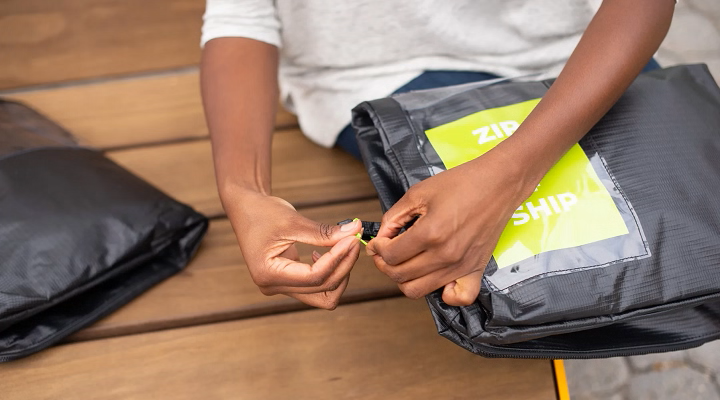As today’s customers demand more sustainability, retailers are re-examining the impact of their packaging decisions, in order to remain both competitive and cost efficient. Globally, retailers are prioritising a fundamental re-think of their delivery chains, coming up with new ways to address the waste challenge. Packaging matters to customers (a lot) Today, customers want to receive their goods in sustainable packaging (namely without plastic) with 73 per cent reporting
eporting they intend to change their purchasing habits to reduce their harmful impact on the environment, according to the 2023 Nielsen Annual Industry Insights Report.
According to Westrock’s Packaging Matters report, 81 per cent of customers tried something new because the product packaging caught their eye, 63 per cent purchased a product again because of the appearance of its packaging, 67 per cent say paper and cardboard based packaging makes a product more attractive than other packaging material and 52 per cent of consumers have changed brands because of ‘green’ packaging.
The message is clear: customers value ‘green’ packaging. For retailers however, delivering on this expectation is not as simple as we might imagine.
Whilst packaging changes may stem from strategic brand initiatives, these decisions affect the entire value chain, in a highly complex way. Despite what consumers may believe, these packaging changes require retailers to examine their entire strategy, from product R&D, procurement, marketing activities and perhaps most importantly, educating their customers on the reasons for their decisions.
There’s more to physical packaging than meets the eye
When looking at physical packaging, cost barriers associated with R&D present a significant challenge as not all plant-based packaging is able to protect all merchandise and not all plastics are created equal. For retailers, deciding to change packaging is not a one-size-fits-all approach, especially when moving away from plastics. Variability in costs and feasibility of plastic production varies widely by plastic types, geographical regions, transport implications and recycling potential. Simply put, the cost of replacing plastic packaging goes far beyond material prices and conversion costs.
Recyclability isn’t guaranteed
Unbeknownst to many, a significant amount of packaging cannot be recycled in existing recycling systems, particularly with multi-material packaging. This presents a huge problem for retailers which cannot be overcome by simply choosing alternative materials. For example, curbing plastic water bottles and replacing them with glass may seem more sustainable to the consumer, though glass is heavier to transport and, as such, has far worse impact from this perspective when examining overall carbon footprint. Complicated trade-offs like these remain a significant issue for companies, particularly in the FMCG space.
Specialist converters may be the missing piece of the puzzle
Because of the cost associated with packaging upgrades, many retailers turn to third-party packaging converters to help them optimise, partnering with those who have the right innovation capabilities to solve the packaging dilemma at scale.
One packaging converter in the United States makes wrapping from upcycled billboard vinyl lined with recycled cotton, which is ultra-lightweight and able to be reused over 200 times. What’s more, each package contains a real-time sensor tracking the delivery journey, as well as temperature measurement, making it ideal for shipping perishable goods and heat-sensitive items. After receiving their goods, the customer simply flips the return label and returns the empty package, where it’s used again for the next order.
How retailers can make a start
For retailers re-thinking the future of their packaging, there are three fundamental considerations that can help them start.
Seek expert advice based on your unique goals
Because the goal of sustainability is broad and subjective, trade-offs will always be present and trying to do this in-house will almost always exhaust capabilities, so consulting experts outside the organisation is crucial upfront. By partnering with third-party experts, you can receive useful advice based on the individual nuances of your business and its customers.
Incorporate circular business principles
When thinking about the life-cycle of goods, designing for reuse and recycling is extremely important. In order to do this, customer data will always help. Collecting information on recycling practices on a regional and even demographic level can make or break a new packaging or material design.
Involve customers through education
Whilst customers often have the best intentions, they are subject to constant greenwashing and misinformation when it comes to packaging, recycling and waste management. By inviting your customers behind the scenes while you research and re-strategise, you can increase engagement through education. By incorporating this into your messaging and marketing activities, you demonstrate to your customers that you align with their preferences, making them feel part of the solution.

